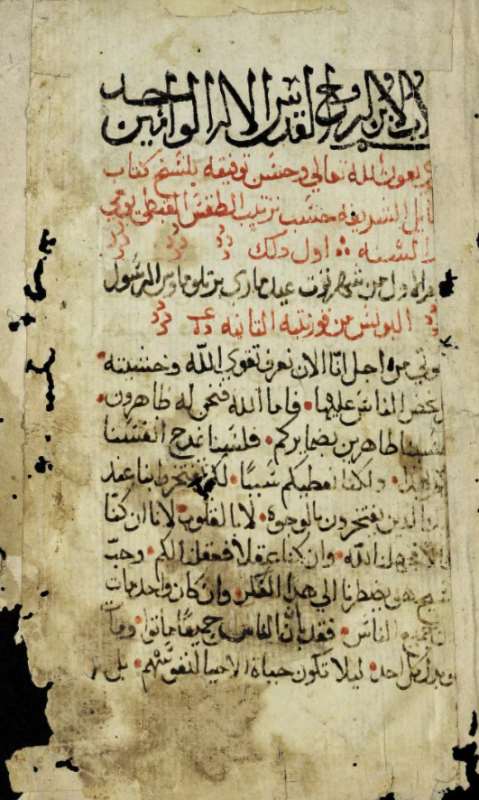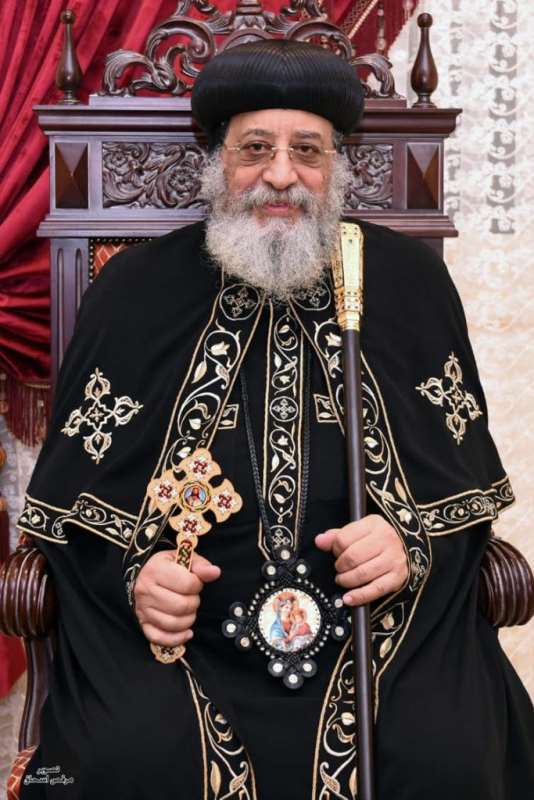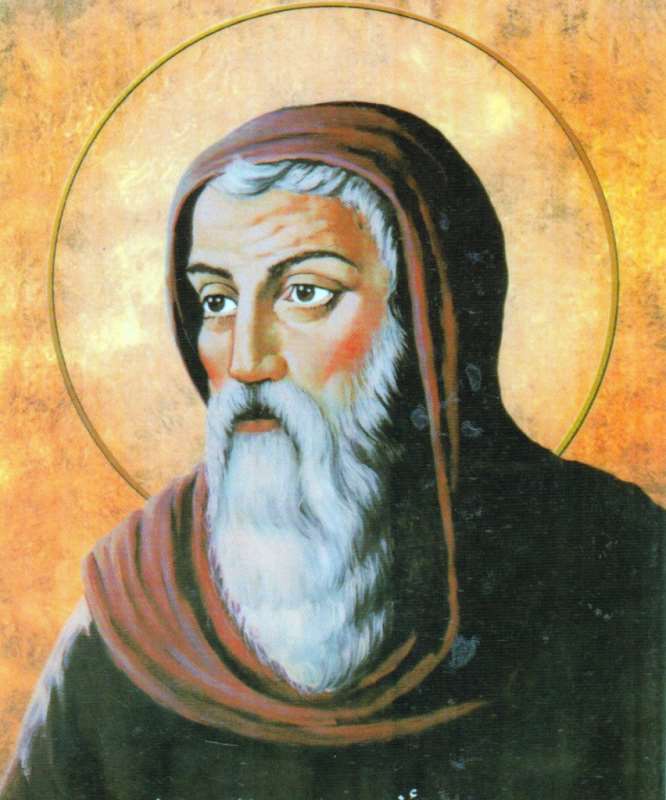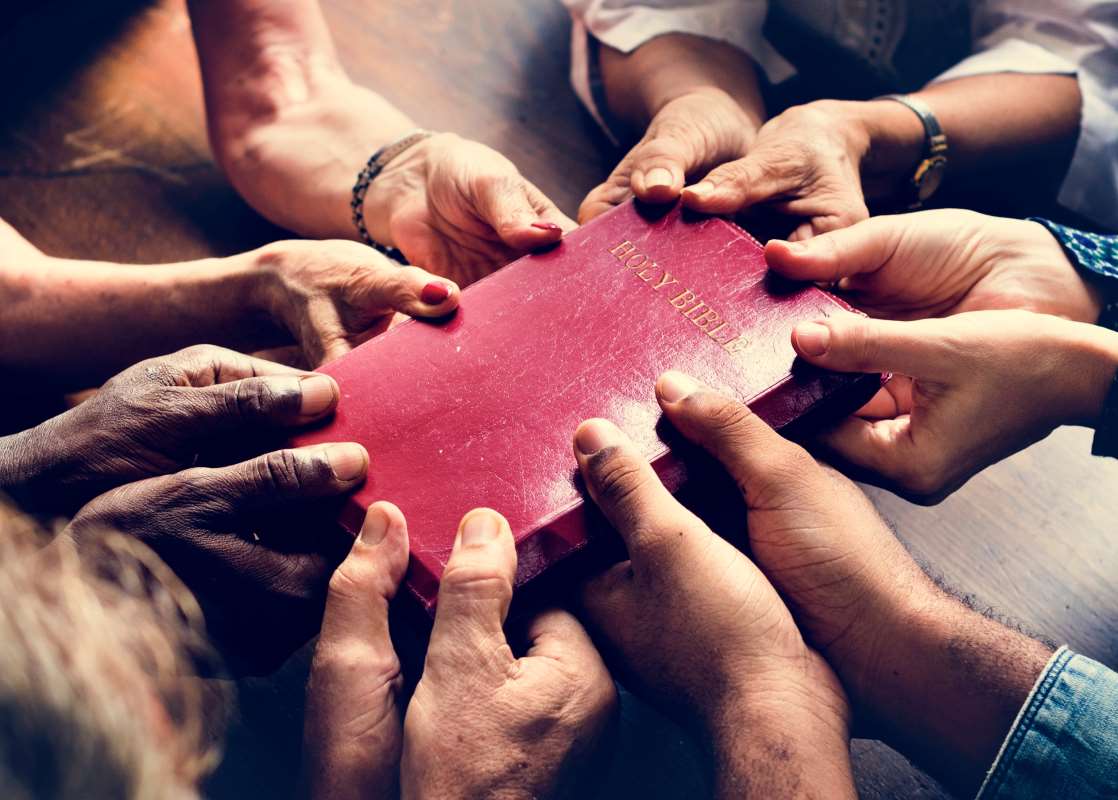The Coptic Orthodox

|
The Coptic Orthodox
Our Faith |
The Coptic Orthodox Church is firmly rooted in the belief in the Holy Trinity: God the Father, God the Son, and God the Holy Spirit. This belief emphasizes the absolute equality and unity of the three Persons in one Godhead, which is central to the Church's teachings.
It also firmly upholds that Lord Jesus Christ is the sole Saviour of the world, an essential tenet that underscores the salvific role of Christ in the Christian faith. The Coptic Orthodox Church prides itself on the continuity and relative stability in its liturgical practices and doctrinal teachings, undergoing fewer changes than most other Christian traditions over the centuries. This continuity extends to its ecclesiastical hierarchy, marked by an unbroken line of Coptic Patriarchs, Bishops, Priests, and Deacons.
Historically, the Coptic Orthodox Church was established by St. Mark the Evangelist, a disciple of Jesus Christ, in the city of Alexandria around 43 A.D. This makes it one of the oldest Christian churches in the world. The Church faithfully upholds the Nicene Creed, a foundational Christian faith statement adopted in the Council of Nicaea in 325 A.D.
St. Athanasius, the twentieth Pope of the Coptic Church, played a pivotal role in this Council. He vehemently defended the Doctrine of Christ’s Divinity, affirming that Christ is of the same substance as the Father. His tireless defence of this doctrine earned him the enduring titles of “Father of Orthodoxy” and “St. Athanasius the Apostolic”.
The term “Coptic” is derived from the Greek word “Aigyptos”, which translates to "Egyptian". With the arrival of the Arabs in Egypt in the seventh century, they referred to the indigenous Egyptians as "qibt", a term that, over time, came to represent both "Egyptians" and "Christians".
The descriptor "Orthodoxy" in the Coptic Orthodox Church signifies the Church's dedication to preserving and transmitting the "original faith" as it was received from Christ and the Apostles. The Copts have repeatedly demonstrated this commitment, staunchly defending the Creed of the Early Church against many challenges and heresies over the centuries. Their resilience and commitment to Orthodoxy underscore the distinctive identity and enduring faith of the Coptic Orthodox Church.
It also firmly upholds that Lord Jesus Christ is the sole Saviour of the world, an essential tenet that underscores the salvific role of Christ in the Christian faith. The Coptic Orthodox Church prides itself on the continuity and relative stability in its liturgical practices and doctrinal teachings, undergoing fewer changes than most other Christian traditions over the centuries. This continuity extends to its ecclesiastical hierarchy, marked by an unbroken line of Coptic Patriarchs, Bishops, Priests, and Deacons.
Historically, the Coptic Orthodox Church was established by St. Mark the Evangelist, a disciple of Jesus Christ, in the city of Alexandria around 43 A.D. This makes it one of the oldest Christian churches in the world. The Church faithfully upholds the Nicene Creed, a foundational Christian faith statement adopted in the Council of Nicaea in 325 A.D.
St. Athanasius, the twentieth Pope of the Coptic Church, played a pivotal role in this Council. He vehemently defended the Doctrine of Christ’s Divinity, affirming that Christ is of the same substance as the Father. His tireless defence of this doctrine earned him the enduring titles of “Father of Orthodoxy” and “St. Athanasius the Apostolic”.
The term “Coptic” is derived from the Greek word “Aigyptos”, which translates to "Egyptian". With the arrival of the Arabs in Egypt in the seventh century, they referred to the indigenous Egyptians as "qibt", a term that, over time, came to represent both "Egyptians" and "Christians".
The descriptor "Orthodoxy" in the Coptic Orthodox Church signifies the Church's dedication to preserving and transmitting the "original faith" as it was received from Christ and the Apostles. The Copts have repeatedly demonstrated this commitment, staunchly defending the Creed of the Early Church against many challenges and heresies over the centuries. Their resilience and commitment to Orthodoxy underscore the distinctive identity and enduring faith of the Coptic Orthodox Church.

Arabic Coptic Prayer book, 1760

Pope Tawadros II of Alexandria

|
Our Pope
Pope Tawadros II of Alexandria |
The Pope of the Coptic Orthodox Church of Alexandria is the Successor of Saint Mark the Apostle and the head of the Coptic Orthodox Church of Alexandria. The 117th Pope was Pope Shenouda III, who reposed in the Lord on March 17, 2012. Metropolitan Bakhomious, archbishop of Beheira and five western cities, was chosen as chair of the Holy Synod and locum tenens of the See of Saint Mark.
Following the Holy Tradition of the Church, the Pope is chairman and head of the Holy Synod of the Coptic Orthodox Patriarchate of Alexandria as a first among equals. This organization is the highest authority in the Church of Alexandria. It formulates the rules and regulations regarding the church’s organization, faith, and order. The Pope is also the chairman of the church’s General Congregation Council (Al Majlis al Milli).
Although historically associated with the city of Alexandria, the residence and Seat of the Coptic Orthodox Pope of Alexandria has been located in Cairo since 1047. The Pope is currently established in Saint Mark’s Coptic Orthodox Cathedral, in a compound which includes the Patriarchal palace, with an additional residence at the Monastery of Saint Pishoy in the wilderness of Shiheet.
Following the Holy Tradition of the Church, the Pope is chairman and head of the Holy Synod of the Coptic Orthodox Patriarchate of Alexandria as a first among equals. This organization is the highest authority in the Church of Alexandria. It formulates the rules and regulations regarding the church’s organization, faith, and order. The Pope is also the chairman of the church’s General Congregation Council (Al Majlis al Milli).
Although historically associated with the city of Alexandria, the residence and Seat of the Coptic Orthodox Pope of Alexandria has been located in Cairo since 1047. The Pope is currently established in Saint Mark’s Coptic Orthodox Cathedral, in a compound which includes the Patriarchal palace, with an additional residence at the Monastery of Saint Pishoy in the wilderness of Shiheet.

|
The Creed Of Faith |
We believe in one God, God the Father the Pantocrator who created heaven and earth, and all things seen and unseen.
We believe in one Lord Jesus Christ, the Only-Begotten Son of God, begotten of the Father before all ages; Light of Light, true God of true God, begotten not created, of one essence with the Father, by whom all things were made; Who for us men and for our salvation came down from heaven, and was incarnate of the Holy spirit and the Virgin Mary and became Man. And He was crucified for us under Pontius Pilate, suffered and was buried. And on the third day He rose from the dead, according to the scriptures, ascended to the heavens; He sits at the right hand of his Father, and He is coming again in His glory to judge the living and the dead, Whose kingdom shall have no end.
Yes, we believe in the Holy Spirit, the Lord, the Life-Giver, Who proceeds from the Father, Who with the Father and the Son is worshiped and glorified, who spoke by the prophets.
And in one holy, catholic and apostolic church. We confess one baptism for the remission of sins. We look for the resurrection of the dead, and the life of the coming age. Amen.
We believe in one Lord Jesus Christ, the Only-Begotten Son of God, begotten of the Father before all ages; Light of Light, true God of true God, begotten not created, of one essence with the Father, by whom all things were made; Who for us men and for our salvation came down from heaven, and was incarnate of the Holy spirit and the Virgin Mary and became Man. And He was crucified for us under Pontius Pilate, suffered and was buried. And on the third day He rose from the dead, according to the scriptures, ascended to the heavens; He sits at the right hand of his Father, and He is coming again in His glory to judge the living and the dead, Whose kingdom shall have no end.
Yes, we believe in the Holy Spirit, the Lord, the Life-Giver, Who proceeds from the Father, Who with the Father and the Son is worshiped and glorified, who spoke by the prophets.
And in one holy, catholic and apostolic church. We confess one baptism for the remission of sins. We look for the resurrection of the dead, and the life of the coming age. Amen.

St. Athanasius the Apostolic

|
The Holy Scripture |
We believe that the Holy Scripture is the divinely inspired Word of God (2 Timothy 3:16). It is the story in which God reveals His love for man throughout the history of mankind.
The Old Testament tells of the history of that revelation from Creation through the Age of the Prophets. It contains 39 books which are divided into five sections: the books of History, the book of the Law, the books of poetry and Wisdom, and the books of prophecy).
The New Testament records the birth and life of Jesus Christ, sets forth the writings and works of His Apostles, and documents the history of the early Church. The New Testament contains 27 main books, written from about 50 to 95 A.D.
The Coptic Orthodox Church prefers the Septuagint (LXX) for the Old Testament and a literal translation of the Greek Textus Receptus, such as the New King James Version, for the New Testament.
The earliest writings of all the New Testament books, as we know them today, are found in the 33rd Canon of a local council held at the city of Carthage in 318 AD. and in the Paschal Letter of St. Athanasius of Alexandria in 367 AD. A local council, probably held in Rome in 382, set forth a complete list of the canonical books of both the Old and New Testaments.
The Scriptures are at the very heart of Orthodox worship and devotion. Its verses are declared in each of its sacraments, memorized and inscribed on the hearts of its people.
The Old Testament tells of the history of that revelation from Creation through the Age of the Prophets. It contains 39 books which are divided into five sections: the books of History, the book of the Law, the books of poetry and Wisdom, and the books of prophecy).
The New Testament records the birth and life of Jesus Christ, sets forth the writings and works of His Apostles, and documents the history of the early Church. The New Testament contains 27 main books, written from about 50 to 95 A.D.
The Coptic Orthodox Church prefers the Septuagint (LXX) for the Old Testament and a literal translation of the Greek Textus Receptus, such as the New King James Version, for the New Testament.
The earliest writings of all the New Testament books, as we know them today, are found in the 33rd Canon of a local council held at the city of Carthage in 318 AD. and in the Paschal Letter of St. Athanasius of Alexandria in 367 AD. A local council, probably held in Rome in 382, set forth a complete list of the canonical books of both the Old and New Testaments.
The Scriptures are at the very heart of Orthodox worship and devotion. Its verses are declared in each of its sacraments, memorized and inscribed on the hearts of its people.


|
The Seven Sacraments |
The Seven Sacraments of Coptic Christianity form the heart and soul of the Coptic Orthodox Church's spiritual journey. Rooted in ancient liturgical practices, these holy rites link the faithful to the divine, guiding them through life's significant moments and ensuring a connection to the teachings of Jesus Christ. They encompass Baptism, which initiates one into the body of Christ; Confirmation (Chrismation), bestowing the gift of the Holy Spirit; Eucharist, offering the sanctified Body and Blood of our Lord; Penance (Confession), facilitating reconciliation with God; Unction of the Sick, granting healing and strength; Priesthood, ordaining priests to shepherd the flock; and Matrimony, consecrating the union of man and woman in holy matrimony. Each sacrament is a divine channel of grace, emphasizing the profound mysteries of God's love and guiding believers towards eternal salvation.
